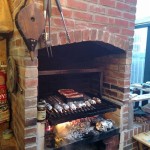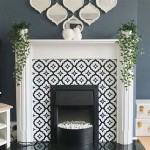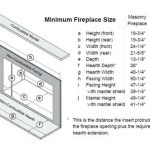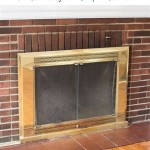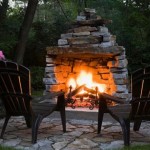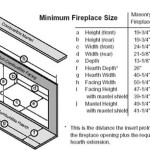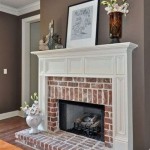Essential Aspects of Traditional Fireplace Ideas
Traditional fireplaces have been a staple in homes for centuries, providing warmth, ambiance, and a timeless aesthetic. Whether you're building a new home or renovating an existing one, incorporating a traditional fireplace can add significant value and enhance the overall character of your space.
1. Architectural Style
When selecting a traditional fireplace design, it's crucial to consider the architectural style of your home. A Georgian-style fireplace, for instance, features a grand mantlepiece with intricate carvings, while a Victorian fireplace showcases a more ornate and decorative design. Choose a style that complements the existing architecture to create a cohesive look.
2. Materials
Traditional fireplaces are typically made from durable materials such as marble, limestone, or brick. Marble offers a sophisticated and elegant appearance, limestone provides a rustic and timeless charm, and brick exudes a cozy and warm ambiance. Consider the overall aesthetic you want to achieve and choose the material that best suits your taste and home's style.
3. Mantelpiece
The mantelpiece is a defining feature of a traditional fireplace. It frames the firebox and can be a focal point in the room. From simple and understated to elaborate and decorative, the choice of mantelpiece should complement the overall design and provide a platform for showcasing décor or artwork.
4. Firebox
The firebox is the heart of the fireplace and where the fire burns. Cast iron is a popular material for fireboxes due to its durability and ability to withstand high temperatures. Fireboxes can also be lined with refractory materials to enhance heat retention and protect the surrounding structure.
5. Surround
The surround surrounds the firebox and provides a transition between the fireplace and the wall. It can be made of the same material as the mantelpiece or a contrasting material to create visual interest. The surround can also feature decorative elements such as molding or tilework.
6. Hearth
The hearth is the area in front of the fireplace that extends onto the floor. It serves as a heat barrier and a gathering place. The material used for the hearth should be non-combustible and durable, such as brick, stone, or tile. Hearths can be raised or flush with the floor, depending on the desired effect.
7. Accessories
Accessories, such as andirons, fire tools, and screens, not only enhance the functionality of the fireplace but also contribute to its overall aesthetic. Andirons support the burning logs, fire tools provide a safe way to tend the fire, and screens protect the room from flying sparks. Consider the style and material of your fireplace when choosing accessories.
By incorporating these essential aspects into your traditional fireplace design, you can create a timeless and functional focal point that will add warmth, character, and value to your home for generations to come.

Fireplace Ideas 45 Modern And Traditional Designs Impressive Interior Design

Fireplace Ideas 45 Modern And Traditional Designs Impressive Interior Design

Don T Install A New Fireplace Without Reading This First Maria Killam

5 Fireplace Mantel Decorating Ideas For Your Traditional Hearth

Devonshire Traditional Fireplace Design Collection By Astria Living Room Orange County Fireplaces Houzz

How To Update The Look Of Your Fireplace

Scorpio Traditional Fireplace Design Collection By Astria Living Room Orange County Fireplaces Houzz Ie

15 Traditional Fireplaces Design Ideas To Inspire Your Renovation Real Homes

Stunning Traditional Fireplace Ideas To Try Direct Fireplaces

40 Stone Fireplace Designs From Classic To Contemporary Spaces Decoist
Related Posts


